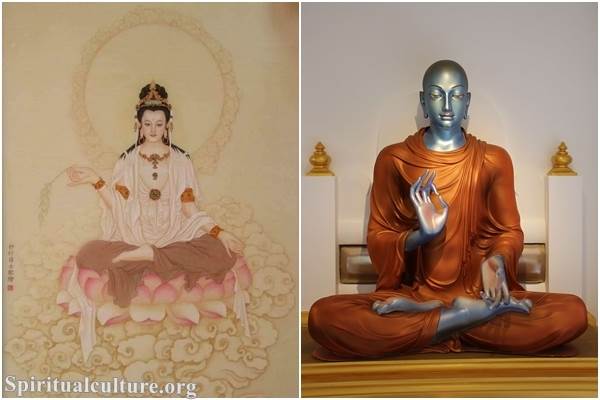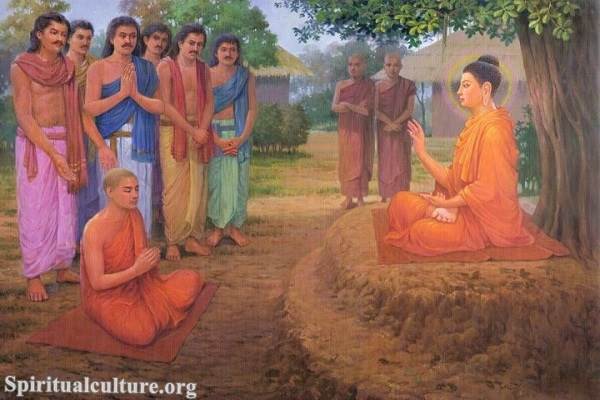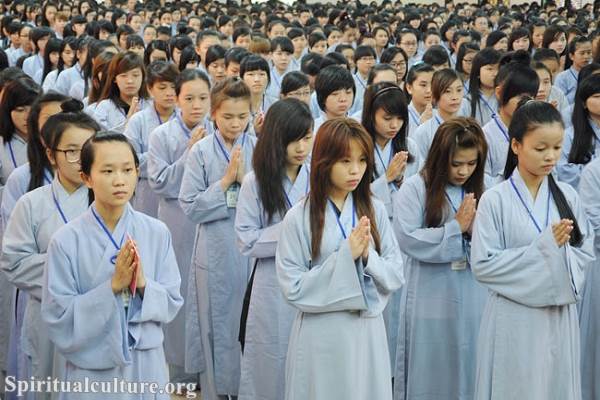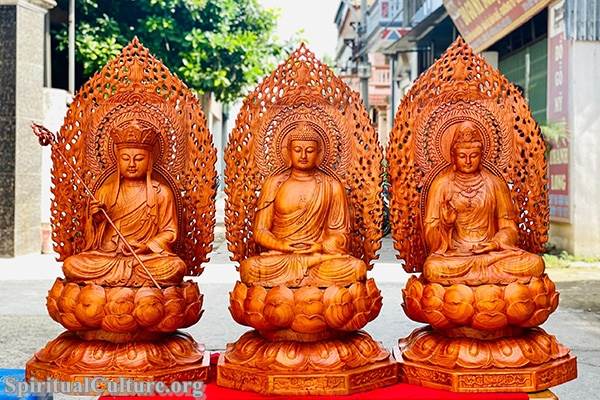There is a moment in the spiritual journey when words no longer serve, when explanation falls short of truth, and silence becomes the greatest teacher. In such moments, we are invited not to understand with the mind, but to awaken with the heart.
Among the most enigmatic and powerful gestures in all of Buddhist tradition is the Buddha’s noble silence — a silence not of evasion, but of illumination. It is recorded in the scriptures that the Buddha often remained silent in response to speculative metaphysical questions. To some, this silence might seem evasive, even frustrating. But to the awakened, it is a sacred mirror reflecting the limits of language and the doorway to direct realization.
In this article, Spiritual Culture invites you into a deep contemplation of this silence — what it meant in the life of the Buddha, how it has been interpreted across traditions, and why it continues to offer timeless guidance for the spiritual seeker today.
The Historical Moment: The Buddha’s Silence in the Pali Canon
The Silence on the Ten Undetermined Questions
In several places in the Pali Canon, the Buddha is presented with ten metaphysical questions — such as whether the universe is eternal or not, whether the soul and the body are the same or different, and what happens to a Buddha after death. These are known as the avyākata — the “undeclared” or “indeterminate” questions.
The Buddha responded to each with silence.
When pressed by the monk Malunkyaputta for answers, the Buddha replied with a parable: a man wounded by a poisoned arrow refuses treatment until he knows who shot it, what caste the archer belonged to, what kind of bow was used. The Buddha’s point is simple and compassionate:
“That man would die before he found all the answers.”
(Majjhima Nikaya 63, Cula-Malunkyovada Sutta)
Just so, the Buddha implied, speculation delays liberation. What matters is not the structure of the cosmos, but the liberation of the mind.
Silence as a Teaching in Itself
In another text, the Brahmajala Sutta, the Buddha outlines sixty-two speculative views and gently dismisses them all as rooted in craving, fear, or confusion. His silence is not disengagement — it is discernment. It reveals that clinging to views, even seemingly spiritual ones, is itself a form of suffering.
The Buddha’s silence is not passive. It is a living teaching, a mirror to the seeker’s mind.
Understanding Noble Silence (Ariya Tunhi-bhava)
More Than the Absence of Speech
The term noble silence (ariyā tunhibhāva) does not simply mean being quiet. It is the silence of one who has gone beyond words, beyond conceptual thinking, and dwells in deep meditative absorption (jhāna). In this state, the mind is unified, free from internal chatter, and resting in direct awareness.
In the Anguttara Nikaya, the Buddha explains noble silence as the second jhāna — a meditative state where directed thought and evaluation cease, and only joy and inner stillness remain.
Thus, noble silence is a sacred inward state — a stillness in which truth is not spoken, but directly known.
Silence as Compassion
Far from being aloof, the Buddha’s silence was an act of compassion. He knew that certain questions, if answered, would entangle the seeker deeper into the web of views. His silence was an invitation: look within. See for yourself. Do not settle for second-hand truths.
As the Zen tradition later echoes:
“Do not seek the truth — only cease to cherish opinions.”
The Buddha’s silence points the seeker toward the immediacy of awareness, beyond all dogma.
Silence in Other Buddhist Traditions
Zen: The Thunder in Silence
Zen Buddhism, perhaps more than any other tradition, reveres the Buddha’s silence as the foundation of its method.
When a student asked Zen master Joshu, “What is the Way?”
Joshu replied, “Your everyday mind is the Way.”
But when asked to explain, Joshu remained silent.
Zen stories, or koans, often culminate in silence, paradox, or sudden exclamations that shock the mind out of dualistic thinking. In this silence, awakening happens not through logic, but through direct encounter.
Zen speaks the same truth: words divide, silence unites.
Tibetan Buddhism: The Union of Emptiness and Clarity
In the Mahamudra and Dzogchen teachings of Tibetan Buddhism, silence is not just a practice — it is the expression of the true nature of mind. The mind, when not grasping at thoughts, reveals its luminous clarity.
Padmasambhava taught:
“When thoughts arise, recognize them. When they cease, rest in the silence that remains.”
Here, the silence is not empty, but pregnant with awareness — the direct realization of śūnyatā (emptiness) and rigpa (pure awareness).
The Modern Meaning of the Buddha’s Silence
In an Age of Noise
We live in a world saturated with words — in news, social media, ideologies. We speak often to fill space, to defend our identity, to assert our opinions. In this age, the Buddha’s silence is not just ancient — it is radical.
His noble silence invites us to:
- Pause before reacting
- Rest in presence before speaking
- Question whether our words are needed — or nourishing
Silence becomes a spiritual rebellion against compulsive speech.
As a Practice for Inner Clarity
In meditation, silence is the gate to clarity. When the inner noise of craving, aversion, and distraction subsides, we begin to hear something deeper — a peace not dependent on conditions.
As Ajahn Chah said:
“If you let go a little, you will have a little peace.
If you let go a lot, you will have a lot of peace.
If you let go completely, you will have complete peace.”
That letting go happens in silence.
What Noble Silence Is Not
It is important to note that the Buddha’s noble silence is not:
- Avoidance of engagement or compassion
- Refusal to address suffering
- Indifference to inquiry
Rather, it is a response from wisdom, offered only when words would hinder rather than help. The Buddha spoke often — but never from ego or attachment. His silence was as intentional as his words.
This teaches us to ask ourselves: When do I speak from wisdom? When do I stay silent from love?
The Sacred Paradox of Silence
Truth Beyond Form
Silence, like the Tao, is elusive. The moment we define it, we lose it. And yet, we must try — with reverence, not reduction.
This is the paradox the Buddha embraced. He did not reject philosophical inquiry — he simply redirected it to its proper place: experience. He taught not by answering every question, but by transforming the questioner.
In this way, silence becomes not the absence of answer, but the beginning of awakening.
Reflect and Reimagine
What, then, does the noble silence of the Buddha mean for us today?
It reminds us that the ultimate truths are not found in debate, but in stillness. That the path to awakening is not paved with more opinions, but with fewer. That we, too, can respond to life’s uncertainties — not with frantic seeking, but with calm presence.
To interpret the noble silence is not to explain it, but to listen to it — with the ear of the heart.
So the next time you face a question without answer, a moment beyond logic, a pain beyond words…
Try silence.
It may be your greatest teacher.
“When the mouth is closed, the heart may finally speak.” – Spiritual Culture
If this touched something within you, explore more with us at SpiritualCulture.org — where silence speaks, and truth unfolds.




